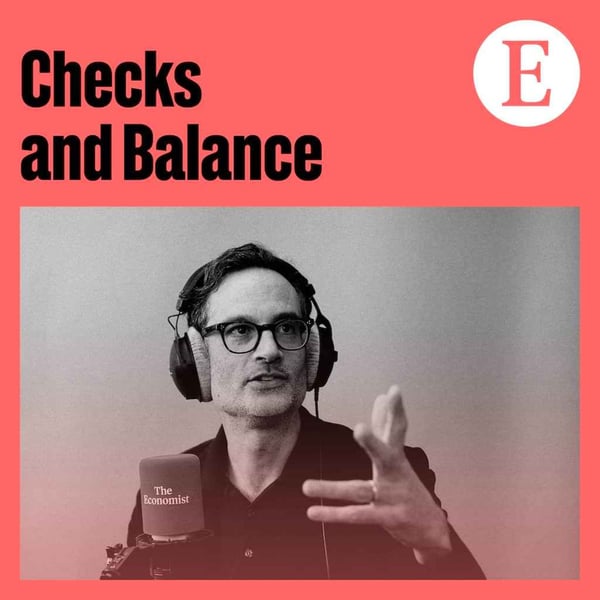Checks and Balance: The 20 year epidemic, part 2
Checks and Balance from The Economist
The Economist
4.6 • 1.7K Ratings
🗓️ 14 April 2023
⏱️ 45 minutes
🧾️ Download transcript
Summary
American authorities confiscated a record amount of illegal fentanyl along the southwest border in 2022. But even so, last year will still likely see the highest number of fatal overdoses in America’s 20-year opioid epidemic. In this episode–our second on the opioid epidemic–we trace the supply chain from China to the southern border, via Mexico. Can that supply route be interrupted? And how do America’s relationships with China and Mexico affect the flow of drugs?
San Diego’s mayor, Todd Gloria, describes the effect fentanyl has had on his city. Alan Bersin, former commissioner of Customs and Border Protection, discusses the state of the southern border. Arturo Sarukhan, former Mexican ambassador to America, talks us through Mexico’s role in stopping trafficking. And Representative David Trone explains how the United States’ relationship with China has changed the supply chain.
John Prideaux hosts with Aryn Braun and Idrees Kahloon.
This is the second part of a short series looking at the opioid epidemic in America. This episode considers the supply for the drugs–a few weeks ago we dove into the demand.
You can now find every episode of Checks and Balance in one place and sign up to our weekly newsletter. For full access to print, digital and audio editions, as well as exclusive live events, subscribe to The Economist at economist.com/uspod.
Hosted on Acast. See acast.com/privacy for more information.
Transcript
Click on a timestamp to play from that location
| 0:00.0 | The pair of emerald green platform heels are pure disco. They look comically impractical |
| 0:09.3 | for the task of law enforcement. But in the 1970s, they helped an undercover agent |
| 0:14.8 | blend into Detroit's nightlife and bust a cocaine ring. They can now be found in one |
| 0:20.0 | of the capital's order museums, the Drug Enforcement Administration Museum in Arlington, Virginia. |
| 0:27.2 | The Drug Enforcement Administration, or DEA, was founded in 1973, as America was beginning |
| 0:32.7 | its war on drugs. Back then, it had 1,500 agents. Over the next 50 years, their number |
| 0:39.7 | expanded by a factor of five. Now, enforcement is more sophisticated than officers sneaking |
| 0:45.9 | into nightclubs in platform heels, but the drugs and the geopolitics they're caught |
| 0:50.5 | up in are much more powerful, too. I'm John Prado and this is checks and balance from |
| 0:56.8 | the economist. Each week, we take one big theme, shaping American politics and explore |
| 1:04.8 | it in depth. Today, can America stop fentanyl trafficking? |
| 1:20.5 | American authorities confiscated a record amount of illegal fentanyl along the southwest |
| 1:31.6 | border in 2022. But even so, when the numbers are eventually tallied, 2022 will likely |
| 1:38.2 | see the highest number of fatal overdoses in America's 20-year opioid epidemic. Much |
| 1:44.7 | of the fentanyl in America comes from China, through Mexico and then across the southern |
| 1:49.3 | border. Can that supply chain be interrupted? And how do America's relationships with |
| 1:55.4 | the governments of China and Mexico affect the flow of drugs into the US? |
| 2:10.1 | With me to do that, our Idris Calune in Washington, an Erin Braun who's written a lot about fentanyl |
| 2:16.3 | and opioids and is based in Los Angeles. Idris, how are you doing? What's up in DC? |
| 2:21.1 | I am well. It is light and sunny here, unlike in Los Angeles, where it is still dark. So |
| 2:29.0 | thanks to Erin for making this work. Erin, you look caffeinated and ready to go. How |
| 2:33.6 | things in LA? You guys just energize me. It can't help it. Things in LA are good. It has |
... |
Please login to see the full transcript.
Disclaimer: The podcast and artwork embedded on this page are from The Economist, and are the property of its owner and not affiliated with or endorsed by Tapesearch.
Generated transcripts are the property of The Economist and are distributed freely under the Fair Use doctrine. Transcripts generated by Tapesearch are not guaranteed to be accurate.
Copyright © Tapesearch 2025.

